Caliber PB C6 Handleiding
Caliber
Niet gecategoriseerd
PB C6
Bekijk gratis de handleiding van Caliber PB C6 (23 pagina’s), behorend tot de categorie Niet gecategoriseerd. Deze gids werd als nuttig beoordeeld door 83 mensen en kreeg gemiddeld 4.8 sterren uit 42 reviews. Heb je een vraag over Caliber PB C6 of wil je andere gebruikers van dit product iets vragen? Stel een vraag
Pagina 1/23

PBC 6
Battery Charger
Manual

OPERATING INSTRUCTIONS:
Please read it carefully before using.
Do not charge 12v/6V battery smaller than 20Ah.The largest capacity
Lead-Acid battery that should be charged is 70Ah.
1. PREPARATION OF THE BATTERY
It is essential to disconnect the battery from the car.This will avoid possible
damage to the alternator.To avoid damage the bodywork, from possible spillage,
it is advisable to remove the battery completely.
Firstly remove the caps from each cell and check that the level of liquid is
sufficient in each cell. If it is below the recommended level top up with ionized,
or distilled water. Under no circumstance tap water should be used.
The cell caps should not be replaced until charging is complete.This allows any
gasses formed during charging to escape. It is inevitable that some minor escape
of acid will occur during charging.
IMPORTANT:
If your battery is the Autofil type, manufactured by Dagenite or Exide,
the glass balls and the long filter cap must be left in place for the duration of
the charging.
If your battery is permanently sealed it is, of course, not neccessary to carry
out these checks.
2. CONNECTION
Connect the crocodile clips to the battery in the following order:
connect the positive charging lead (red) to the positive terminal post of the
battery (marked P or +)
Connect the negative lead (black) to the negative post of the battery
(marked N or -)
It is important to ensure that both crocodile clips make good contact with their
respective terminal posts.
3.VOLTAGE SELECTION
Select the proper voltage before charging. Should you charge the 6V battery,
switch the voltage selecting switch to 6V and vice versa.The voltage selection
switch is located on the front of the case.
4. CHARGING
Insert the AC power plug into the mains supply of 230V (AC), your Battery
Charger should now be working and the rate of charge will be shown on the
panel of lamps fitted on the front of the charger.
When a flat battery is initially connected to the battery charger the charging
3
PBC 6 LEAD-ACID
BATTERY CHARGER
6V/12V 6A/3A (5A/2.6A RMS)
1. GASES
When the battery is being charged you may notice bubbling in the fluid caused
by release of gas.As the gas is flammable no naked lights should be used around
the battery, and the area should be kept well ventilated. Because of the risk of
explosive gas, only connect and disconnect the battery leads when the mains
supply is disconnected.
2. REVERSE POLARITY PROTECTION (OUTPUT CIRCUIT FUSE)
In order to protect the charger from incorrect connecting the positive lead to
the negative terminal, or vice versa, a protective fuse is fitted. If connected
incorrectly the fuse will blow, and will need to be replaced by a fuse of the
same size and rating.
The fuse is situated in a slot on the bottom of the charger. It is an automotive
blade type fuse (Caliber product AF 07).
The fuse rating is 7,5A.
Always disconnect the charger from the mains before replacing
the fuse!
3.TYPE OF BATTERY
This charger is only suitable for rechargeable Lead-Acid battery and should not
be used to recharge NICAD, Optima or any other type of battery.
4. CAUTION
When not in use, keep the charger in a dry area to avoid moisture damaging
the transformer.
Please note:This battery charger is for indoor use only!, keep away from liquids
at all times.
If the main supply cord is damaged, replacement can only be carried out by the
near service station or the qualified person. Otherwise life hazard may be cau-
sed.
This battery Charger can not be openend, any attempt of modification to this
unit will be caused ineffective of guarantee.
5. DANGER
Avoid getting electrolyte on your skin or clothes. It is acidic and can cause
burns. If this occurs, you should rinse the affected area with water immediately.
E N G L I S H
2

It is essential to keep the electrolyte level above the plates. Note, however, that
you should not overfill it, as the electrolyte is strongly acidic.
When topping up DO NOT USE TAP WATER.Always use distilled or ionized
water. It is important to keep the acid level up. If necessary have it checked by
your garage.
CHECKING THE CONDITION OF YOUR BATTERY
Using a hydrometer, which can be purchased from most motor accessory sto-
res, you can check the specific gravity of the electrolyte in each cell.The hydro-
meter is used to suck up a quantity of fluid from the cell.The weighted float
inside the hydrometer will register the condition of the cell. Put the fluid back
into the cell after testing, taking care not to splash the fluid about.
Always wash out the hydrometer after use!
SIMPLE FAULTS
A) If the panel lamps fail to light
1. Switch off immediately at mains
2. Check that the fuse in the charger has not blown
3. After switching off the mains supply, ensure that the crocodile clips are
making good contact with the terminal posts. Switch mains supply on and
check again.
4. Ensure that the leads are not damaged.
B) If the panel lights flicker and go out:
1. Switch off immediately at mains.
2. Check that the fuse in the charger has not blown.
3. Ensure that the output leads are not touching.
4. Check to see that the positive and negative leads are connected to the
correct terminals.
PLEASE PAY ATTENTION TO:
- Do not charge batteries smaller than 20Ah, the largest capacity Lead Acid
battery that should be charged is 70Ah.
- This battery charger is only suitable for rechargeable Lead Acid battery,
do not charge NICD or any other type of battery.
- Please keep the battery charger in up right position when using.
Otherwise might cause fire hazard.
5
rate should build up quickly. As the battery becomes more charged the rate of
charge will drop.This is normal. The charging current will never fall to zero, as
the charger will continue to give output even when the battery is fully charged.
5. ELECTROLYTE
Regularly check the specific gravity of the liquid, using a hydrometer, until a
reading of “Fully charged”, or 1.250 is reached. A charging time of no more than
10 hours is recommended for battery of 34-45 ampere hours capacity.
6.WHEN THE CHARGING IS COMPLETE
Switch of the mains supply, unplug the charger, and disconnect the leads from
the battery posts. Inspect the liquid levels in each cell and top up, if necessary,
using the correct fluid. Now replace the caps.Any surplus fluid around the cell
tops should be wiped off (this should be done with extreme care as it may be
acidic).
CAR BATTERY MAINTENANCE
It is essential to keep your battery regularly charged up throughout the year,
especially during the winter months.
In the winter the effectiveness of your car battery is reduced by the cold. Oil is
thick, engines are difficult to start at the heater, windscreen wipers and lights
are all draining power. It is at this time that batteries have to be at peak power.
If your battery is not regularly maintained and kept fully charged, it can cause
problems and a possible breakdown.
Listed are some helpfull hints on how to keep your battery healthy in
conjunction with your battery charger
FAULTY CELLS
Batteries are usually made with six cells. One of these cells can detoriate or get
damaged. If, after several hours charging your battery is still flat, you should test
the battery.Take hydrometer readings from each cell in the battery. If one
reading is lower than the others, this could indicate a faulty cell. If necessary,
get an Auto-Electrician to check your battery. One faulty cell is enough to ruin
your battery. It is pointless to continue using it and you would be better getting
a new one.
CARE
Sometimes the battery may appear flat, but this could simply be dirty or loose
connections on your battery terminals. It is important to maintain the leads on
a regular basis. Do this by removing the leads from the battery, cleaning the
inside of each connector and the terminal posts on the battery. Smear the
terminal posts with any of the readily available gels that one can get for this
purpose. Replace the connectors and tighten firmly.
E N G L I S H
4
Product specificaties
| Merk: | Caliber |
| Categorie: | Niet gecategoriseerd |
| Model: | PB C6 |
Heb je hulp nodig?
Als je hulp nodig hebt met Caliber PB C6 stel dan hieronder een vraag en andere gebruikers zullen je antwoorden
Handleiding Niet gecategoriseerd Caliber

11 Juni 2023

9 Juni 2023

3 Juni 2023

2 Juni 2023

18 Mei 2023

9 Mei 2023

1 April 2023

31 Maart 2023

23 Maart 2023

22 Maart 2023
Handleiding Niet gecategoriseerd
- Intermec
- KWS KitchenWare Station
- Switel
- Beaba
- TESLA Electronics
- Helios Preisser
- ID-Tech
- ARC
- MOON
- Kruidvat
- Labelmate
- ToughTested
- Marshall Electronics
- Mitsubishi
- BSS Audio
Nieuwste handleidingen voor Niet gecategoriseerd
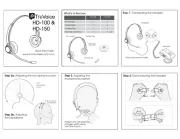
31 Juli 2025
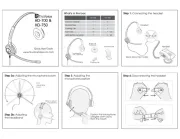
31 Juli 2025
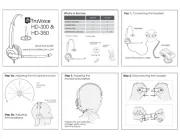
31 Juli 2025
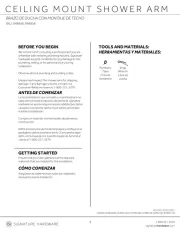
31 Juli 2025
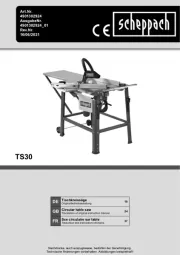
31 Juli 2025
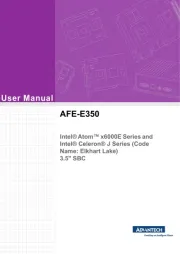
31 Juli 2025
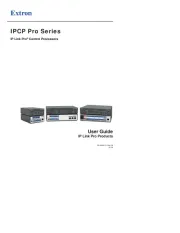
31 Juli 2025
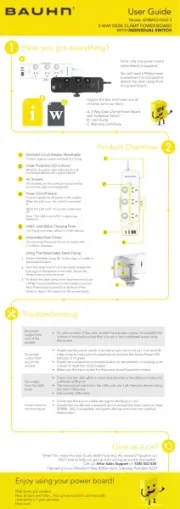
31 Juli 2025
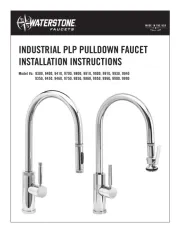
31 Juli 2025
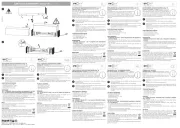
31 Juli 2025